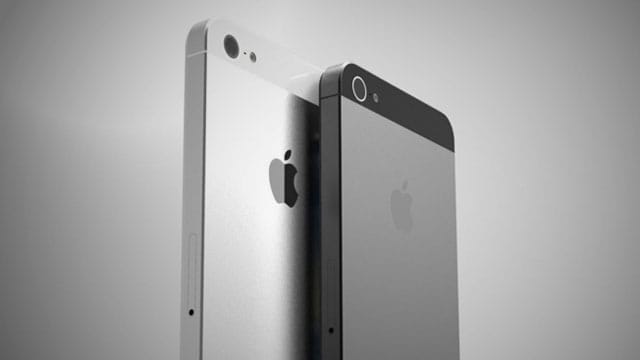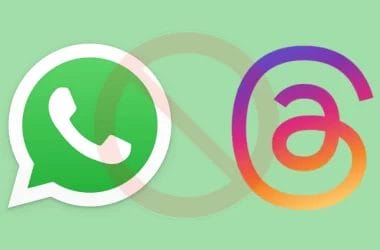The Apple iPhone 5 is finally real. While its specs are premium, the iPhone isn’t the only worthwhile smartphone on the block. We compare it, spec to spec, to the top Android and Windows phones: the Samsung Galaxy S3, and Nokia Lumia 920.
Keep in mind that since the Lumia 920 and iPhone 5 aren’t yet available, we’re limited to educated speculation, rather than to the side-by-side, in-the-flesh evaluation. We’ll have to savethat for later, when we have all three devices in-house. Until then, we offer up our winners so far for each major category. You don’t have to agree with us, and we certainly reserve our right to change our minds when we see the phones in full, but going on the specs, here’s how we feel.
Design and build
Apple’s aluminum-and-glass iPhone 5 retains its super-industrial aesthetic, metal buttons and all. Its new, all-metal backing could look slightly less luxe than the iPhone 4S’, but it will survive far more drops.
Then you have the Nokia Lumia 920, whose yellow, red, white, black, or gray polycarbonate body and rounded edges produce a punch of pop sensibility in an otherwise staid design world. It’s a good look for the phone, and a smart one that really helps Nokia stand out; however, distinctiveness and the nevertheless plastic body aren’t everyone’s cup of tea.
We find the GS3’s design appealing, but shiny, glossy plastic doesn’t scream “quality.” That isn’t to say that the GS3 is more prone to breaking or shattering than the other two; in fact, plastic has the benefit of scuffing rather than shattering. However, we do really love the GS3’s in-hand feel, which is comfortable despite its much larger size.
Our winner so far: Based on looks alone, we’re digging the iPhone 5’s familiarly crisp lines most, but we also love the Lumia 920’s colorful unibody statement.
 Screen size and clarity
Screen size and clarity
The iPhone 5’s 1,136×640 pixels on its 4-inch screen still yields 326 pixels per inch and gives the phone a 16:9 aspect ratio, wider than the iPhone 4S. However, Apple boasts that its sRGB display delivers 44 percent more color saturation and cuts down on glare.
Samsung’s Galaxy S3 has the largest screen of the three, an 4.8-inch HD Super AMOLED, which yields a 1,280×720-pixel resolution and a pixel density of 306 pixels per inch. Its size offers the most expansive real estate for watching videos, reading, and composing messages, but there are three minor drawbacks: the lowest pixel density of the trio, high reflection, and a dimmer maximum brightness than the iPhone 4S and the HTC One X.
Nokia’s Lumia 920 has a 4.5-inch Nokia PureMotion HD+ display, which is a fancy name to describe its AMOLED screen technology. Its WXGA resolution (1,280×768 pixels) is a little higher than the standard HD (1,280×720 pixels). Combined with the screen size and the 332 pixels per inch, resolution could be tighter than on the GS3 and iPhone 5.
Nokia has also brought its ClearBlack Display filter to the Lumia 920; it definitely cut down glare on the Lumia 900, and Nokia claims that this version is even better.
Our winner so far: The GS3 offer the largest screen, but in terms of clarity, the Nokia Lumia 920 theoretically takes this round for its high pixel density and antiglare properties, followed by the iPhone 5.
 Camera prowess
Camera prowess
This is a tough call since all three phones bring their A-game here. The iPhone has set the benchmark in terms of camera phone performance for quite a while and the improvements to the iPhone 5’s imaging system will no doubt cement its lead. These include improved low-light performance and a new panorama shooting mode that catches up to Android.
Of course Android devices in many cases surpass the iPhone. Samsung’s Galaxy S3 has a sensor that offers the same 8-mega-pixel resolution as the iPhone 5, plus it features tons of fancy shooting modes like panorama and multishot burst mode.
The Nokia Lumia 920 is the real dark horse in the smartphone camera phone arms race. On paper, its 8.7-megapixel camera and PureView technology promise better performance than both the iPhone and Galaxy S3. It also will be able to run special apps within the camera application itself, allowing you to upgrade its functionality greatly over time — at least that’s the theory.
Our winner so far: Though we haven’t seen the iPhone 5’s camera in action, chances are high that it’ll trump the Galaxy S3 since the iPhone 4S matches the GS3 now. Because Nokia’s Lumia 920 is still unproven and the Lumia 900’s camera wasn’t awe-inspiring, we’re tempering our hopes with doubts.
LTE and network promise
A this point, LTE on the iPhone 5 was an inevitability, and a feature that’s been in the hopper for some time.
Our winner so far: Samsung phones have long been LTE-capable and the Nokia Lumia 920 will be Espoo’s second LTE phone. Apple is just now catching up.
Battery life
Nokia plans to equip its Lumia 920 with a 2,000 mAh battery, which should provide a good amount of run time, especially considering that Windows Phone has traditionally been a very economical operating system. Meanwhile, the Samsung Galaxy S3 comes with a slightly larger 2,100 mAh battery that lasted for well over 9 hours playing video. Apple is coy on the iPhone 5’s capacity, but promises that its will offer 10 hours of video playback and 8 hours of Web surfing over LTE.
Of course, if you’re constantly using battery-draining features like S-Voice on the Galaxy S3, or streaming video, no phone will last as long as you’d like.
Our winner so far: It’s hard to say since we haven’t put the Lumia 920 or iPhone 5 to the test, but the Galaxy S3 is a sure bet for most, plus it offers a removable battery.
 NFC
NFC
Apple’s iPhone 5 needed a few features to shore up some weak spots: a larger screen, LTE, and, to a lesser extent, NFC. It got the first two, but Apple didn’t mention anything about NFC for the iPhone 5.
NFC, which makes it possible to share content across phones and pay for purchases, might not be a big deal to you, but it is an entire category of software capability that’s closed on the iPhone 5.
Our winner so far: Samsung, which was the first to market with file-sharing over NFC, and has been aggressively marketing its S Beam feature.
Voice assistant
Siri in the iPhone 4S and Google’s Voice Actions are evenly matched, but Samsung is standing behind its own S Voice assistant, which falls far behind.
Nokia phones stick with Microsoft’s integrated, much more subtle voice command software, TellMe, but in Windows Phone 8, Microsoft will let third-party app-makers work in their own commands, so you can bark at individual apps like Audible, to read aloud, pause, or stop.
Our winner so far: Among these three phones, Siri takes the voice command cake.
 The Nokia Lumia 920 is a promising phone with some exciting, but unproven features.
The Nokia Lumia 920 is a promising phone with some exciting, but unproven features.
Final verdict
If we had to recommend just one handset of the three based on these specs right now, we would (narrowly) choose the iPhone 5.
Here’s why: Out of these three phones, the iPhone 5 isn’t the most innovative, but it is a reliable, intuitive package that earns top points for software and hardware reliability. Solid, strong design, LTE speed, and a proven camera that just gets better and better meets iTunes and app store robustness and the new iOS with turn-by-turn voice navigation.
The Samsung Galaxy S3 has a ton of really neat, innovative new features, but it also has far more trip-ups, which make for a less smooth experience overall. We still love the GS3, but the rich, highly customizable Android 4.0 interface is too much for some users, and many of Samsung’s innovations, especially in content-sharing, are more complicated to use and not very universal.
We’re also very excited to review the Lumia 920, which offers NFC, wireless charging, and promises of a gorgeous display. However, we’re less enamored of Nokia maps, getting multimedia still isn’t as robust as iOS or Android, and there’s a question hanging over the camera, a major selling point for us. We’d also like to see how well wireless charging works; a stumble here would be a major stumble indeed.
The original Lumia 900 camera fell short of expectations, so until we see the Lumia 920’s 8.7-megapixel PureView lens in action, we’re much less certain about its real-life performance. Nokia’s recent camera kerfuffle certainly doesn’t instill unquestioning confidence.
This isn’t by any means a blow-away verdict, and the results will be very much up for debate as the iPhone 5 and Lumia 920 come into our offices for scrutiny. One thing is clear, the iPhone faces its stiffest competition yet which makes blindly choosing Apple without examining the facts first a hasty choice — so if you’re at all on the fence about the iPhone 5, we recommend you wait for the full review.
Which phone do you back, and why? Share with us in the comments.
As an Amazon Associate, TechCity may earn a small commission if you shop these products.
















